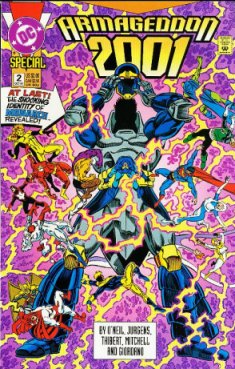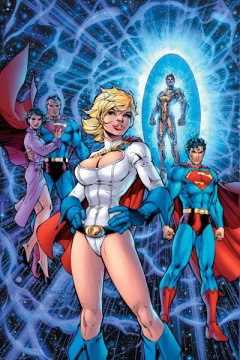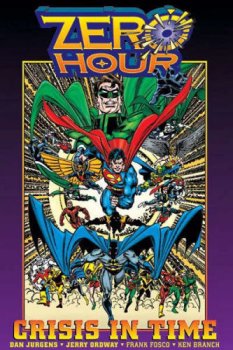The promises
sound familiar, and DC both pioneered and mastered the event
that would shatter your senses and realign your reality.
Infinite Crisis is just the latest, and only a fool
would consider it the last.
As most probably
know, Infinite Crisis serves as sequel to that original,
Marv Wolfman and George Perez' Crisis on Infinite Earths,
the first crossover to address continuity. DC had been publishing
for fifty years by 1985, and in that fifty years, the company
had built up a glorious heaping mess of storylines both
stupid and brilliant. What worlds they hadn't created to
explain the absence of heroes for some time, they bought.
The Freedom
Fighters, killed in the pages of Infinite Crisis #1,
came from Earth-X - characters originally published by Quality
Comics. On Earth-S, the heroes from Fawcett Comics such
as the Marvel Family and the way underused Spy Smasher,
Bulletman and Mr. Scarlet resided. Just before Crisis
on Infinite Earths, then-publisher Dick Giordano snagged
the rights to the Charlton Action Heroes such as Blue Beetle
and Captain Atom.
(DC didn't even
try to add in the Archie Comics heroes when they briefly
had the rights. They just started a whole new and short-lived
imprint, Impact! Comics.) Many Earths merged into one. Yet
the continuity got sticky again after twenty years, with
characters never adequately explained and editorial demands
making the question of who met who when and why even more
confusing than before. Hence Infinite Crisis. And
yet…this marks the FOURTH crossover to redefine continuity.
 |
The forgotten
events, the ones that Infinite Crisis has not yet referenced,
but knowing Geoff Johns it probably will, are Zero
Hour: Crisis in Time and The
Kingdom
and The
Kingdom .
Zero Hour itself took its cue from Armageddon 2001,
a summer crossover event published in 1991. There Matthew
Ryder, the denizen of a future dystopia started in 2001 (gasp)*,
had dim memories of having been saved as a child by a superhero,
but he could not remember which one. In the years since, the
superheroes had been systematically wiped out by an armored
despot named Monarch, who had once been one of their own.
.
Zero Hour itself took its cue from Armageddon 2001,
a summer crossover event published in 1991. There Matthew
Ryder, the denizen of a future dystopia started in 2001 (gasp)*,
had dim memories of having been saved as a child by a superhero,
but he could not remember which one. In the years since, the
superheroes had been systematically wiped out by an armored
despot named Monarch, who had once been one of their own.
Using an experimental
time travel device, Matthew Ryder went back to 1991 to try
and find out who Monarch had been before, and hopefully
put a stop to his evil plans. The trip through time transformed
the young engineer into the yellow and black chronal warrior
called Waverider (visually striking enough to show up on
Justice League Unlimited).
Waverider could
see into heroes' futures when he touched them. No, those
futures didn't include long walks holding hands with Waverider.
Improbably, it turned out that Hawk (of "…and Dove") would
become Monarch, and the quantum-powered Captain Atom would
knock him into the timestream.
At the end of
Armageddon 2001, Waverider discovered that he
was the hero that had saved himself as a young boy, and,
in a future with no Monarch, that boy would grow up and
become one of The Linear Men, guardians of the timestream.
They inducted Waverider as one of their agents, sworn to
protect the one true continuity even though Waverider himself
violated it, which made things awkward at the Linear Men
company picnic.
The real
end result of Armageddon 2001, though unintended
at the time, was Zero Hour.**
Monarch got
a taste for chronal energy, and his constant sucking on
the time pipe transformed him into the even more powerful
villain Extant. Wishing to remake reality in his own image,
Extant figured that he could just cause a universal do-over,
with him in charge.
Unfortunately
for Extant, another hero-turned-villain already had more
power and stole his thunder. Fresh from destroying Oa, everybody's
favorite Green Lantern turned genocidal maniac Parallax,
Hal Jordan, elbowed Extant aside as DC editors reached in
and tweaked a few things about their characters' pasts.
Everyone
seemed to forget that Lex Luthor had once been a fat older
businessman before cloning himself into the handsome rogue
we know today. Batman never found out who killed his parents
(though, just as in Batman Begins, Joe Chill murdered
them). Jerry Lewis had never made The Day The Clown Cried.








